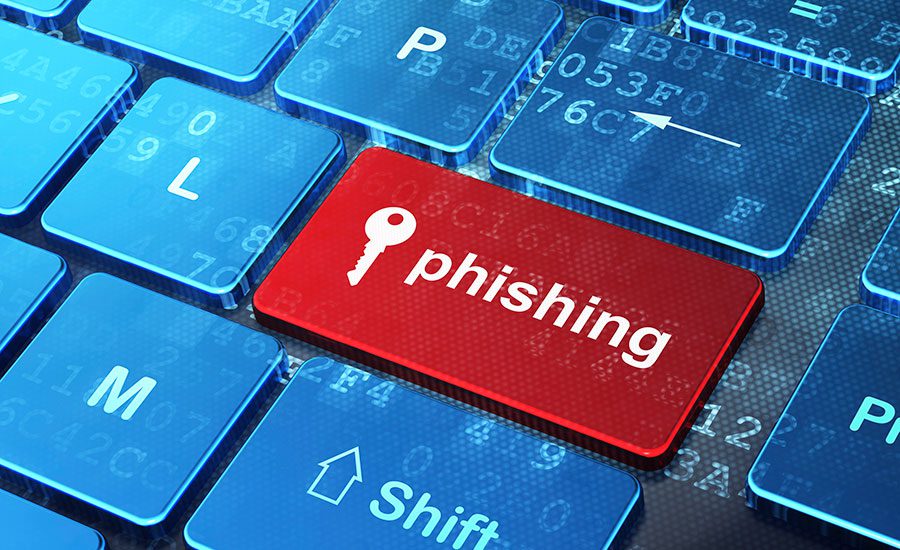
In today’s digital world, cybercriminals are constantly evolving their tactics, and small businesses are often prime targets. One of the biggest threats? Payroll phishing scams. These scams are designed to trick employees into handing over sensitive payroll data, leading to financial losses, tax fraud, and serious headaches for business owners.
If you run a small business, protecting your payroll from phishing attacks should be a top priority. In this blog, we’ll cover how these scams work, common red flags to watch for, and proactive steps you can take to safeguard your business.
How Payroll Phishing Scams Work
Payroll phishing scams usually begin with a deceptive email, text message, or phone call. These messages often appear to come from a trusted source—such as a manager, HR department, or payroll provider—requesting sensitive payroll information. Scammers use psychological tricks like urgency, authority, and fear to manipulate employees into providing:
- Employee W-2s or tax forms
- Direct deposit changes
- Login credentials for payroll systems
- Bank account details
Once cybercriminals obtain this information, they may reroute payroll deposits, commit tax fraud, or even sell employee data on the dark web. These attacks can be devastating for small businesses that don’t have the financial cushion to absorb losses from fraud.
Common Signs of Payroll Phishing Attacks
While phishing emails are getting more sophisticated, they often have telltale signs that should raise red flags:
- Urgent or threatening language – Messages demanding immediate action, such as “Your payroll will be delayed unless you verify your account now!”
- Requests for personal information – Emails asking for W-2s, bank account details, or payroll login credentials.
- Unfamiliar sender addresses – The email may look like it’s from a known contact but has a slightly altered domain (e.g., “payroll@yourcompany.co” instead of “payroll@yourcompany.com”).
- Poor grammar and formatting – Many phishing emails contain typos, inconsistent formatting, or awkward wording.
- Suspicious links or attachments – Hover over links before clicking to check if they lead to a legitimate website.
How Small Businesses Can Protect Against Payroll Phishing
Preventing payroll scams requires a mix of employee training, technology, and strong policies. Here’s what small business owners can do to minimize the risk:
1. Educate Your Employees
Your team is the first line of defense against payroll scams. Provide regular training on phishing awareness, teaching employees how to spot suspicious emails and verify requests before taking action. Encourage a culture of “trust, but verify.”
2. Implement Multi-Factor Authentication (MFA)
Adding an extra layer of security to payroll accounts can prevent unauthorized access. Require employees to use multi-factor authentication (MFA) when logging into payroll systems or making direct deposit changes.
3. Establish Clear Payroll Policies
Create company-wide policies on how payroll changes should be requested and approved. For example:
- Employees should never update direct deposit information via email.
- Any payroll-related request should be verified via phone or in person before processing.
- Only designated personnel should have access to payroll records.
4. Use Secure Payroll Software
A reputable payroll service provider (like Payroll Complete) offers built-in security features to protect against fraud. Look for data encryption, secure login processes, and automatic alerts for unusual activity.
5. Stay Vigilant with IT Security
Ensure your business has strong cybersecurity measures, including:
- Regular software updates to patch security vulnerabilities.
- Email filtering to block suspicious messages before they reach inboxes.
- Anti-phishing tools that flag potential threats.
What to Do If You Fall Victim to a Payroll Phishing Scam
If you suspect that payroll information has been compromised, take immediate action:
- Contact your payroll provider – If direct deposit details were changed, report the issue and request a reversal.
- Alert employees – Let affected employees know so they can monitor their bank accounts and credit reports.
- Report the scam – Notify the IRS, the Federal Trade Commission (FTC), and local authorities.
- Strengthen security – Update passwords, enable MFA, and review cybersecurity policies to prevent future attacks.
Final Thoughts
Payroll phishing scams are a serious threat, but small businesses can fight back with awareness, training, and strong security measures. By staying one step ahead of cybercriminals, you can protect your employees’ hard-earned money and keep your business secure.
For additional tips on protecting your payroll data, check out these resources:
- Protecting Sensitive Employee Data: Best Practices for Payroll Firms
- Payroll scam: Fraudsters are targeting your employee’s paycheck
At Payroll Complete, we take security seriously and provide safe, reliable payroll solutions to help small businesses thrive. Need assistance? Contact us today to learn how we can keep your payroll protected.
